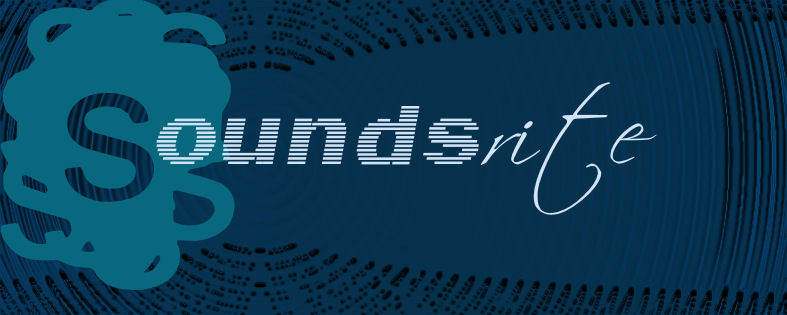
Soundsrite soundsRite

soundsRite home about email: editorial group

This work is licensed under a Creative Commons Attribution-No Derivative Works 3.0 Unported License.
There are big audio and av files on soundsRite. You may need some patience while they load sufficiently to stream. (If you are interested in viewing less compressed renderings of the pieces, i.e. larger files, see the versions at the bottom of the page.)
Full Body Comprovisations No.1 and No.2 (2012) are improvised through the Fluxations interactive system. The algorithms were developed by Joshua Mailman. The interactive system, which involves depth motion tracking with an infrared video camera, was jointly developed with Sofia Paraskeva, who also designed, built, and programmed two sensor gloves also used. Both pieces are made through a sort of dance performed by Mailman.
Fluctuations of texture, rhythm, timbre, and harmony in the music correlate with fluctuations of color, size, position, and density of objects seen in the visual field. All of these trajectories of flux are created through the bodily positions and motions of the dancer-improvisor.
Traces of a ghost: The aural-visual correlations are somewhat clear in Full Body Comprovisation (FBC) No.1, but less so in FBC No.2. How does the particle system layer seen relate to the music heard? Both swerve as if by a ghost, since the video omits the dancer whose movements affect both--a bit like watching Claude Rains spookely shift furniture in The Invisible Man (1933).
Lateral movement of the dancer's body affects the hue of the flat background color as well the pitch-class content of the arpeggiated chords. Also, when the body (ghost) moves, the particles are disturbed and move too. In FBC No.2 from :33 to 1:00 the background hue shifts from yellow-green to blue and back to yellow-green; meanwhile the harmonic content shifts flatward on the cycle of 5ths and back, an atmospheric shift barely felt. While this happens the particles are disturbed leftward and then go rightward. That's the indirect correlation. In both No.1 and No.2, when you see particles moving mostly sidewise you'll also tend to see the background hue shift and the aural harmonies shift as well. It's all smooth though, subtle like physiological or meteorological flux.
Related publications:
• "Improvising Synesthesia: Comprovisation of Generative Graphics and Music" in the Leonardo Electronic Almanac (MIT Press) v.19/3, 2013.
• "Continuous Movement, Fluid Music, and Expressive Immersive Interactive Technology: The Sound and Touch of Ether's Flux" (co-authored with Sofia Paraskeva) forthcoming in Sound, Music and the Moving-Thinking Body (edited by Osvaldo Glieca and Marilyn Wyers) Cambridge Scholars Publishing, 2013.
• "The Fluxations Stochastic Interactive Algorithmic Music Engine (SIAME) and iPhone App" Proceedings of the 9th Sound and Music Computing Conference (SMC), 2012, Copenhagen.
About the author of the piece:
Joshua Banks Mailman is a theorist, analyst, critic, philosopher, performer, technologist, and composer of music teaching music theory at University California, Santa Barbara (UCSB), previously at Columbia University and NYU. He holds a bachelors degree in philosophy from the University of Chicago and Ph.D. in music theory from the Eastman School of Music. He researches musical form from flux, temporal dynamic form and is published in the Journal of Sonic Studies, Music Analysis, Psychology of Music, Music Theory Online, Open Space, and Perspectives of New Music. His "Agency, Determinism, Focal Time Frames, and Processive Minimalist Music" is chapter six in Music and Narrative After 1900 from Indiana University Press, 2012. He developed interactive music technologies for the iPhone presented at the 9th Sound and Music Computing Conference in Copenhagen 2012 and International Conference on Music Perception and Cognition (ICMPC) and European Society for the Cognitive Sciences of Music (ESCOM) in Thessaloniki, Greece. His multimedia works the Chameleon Jellyfish series are published in the Open Space Web Magazine. His computer music works include Heraclitean Dreams (2008), Licorice Loops 1 and 2 (2012), Lavender Lullaby (2012), Vortex Collosus (Hommage to Ligeti) (2011), and Murmurs of the Moist (2012). Visit his website.
Larger, less compressed versions of the two pieces: Go to Comprovisation 1. Go to Comprovisation 2 .